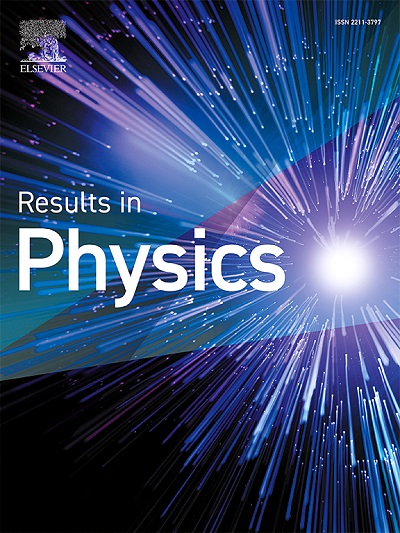Elastic analysis of uniform pressurized axisymmetric cylindrical shells made of saturated porous materials
IF 4.4
2区 物理与天体物理
Q2 MATERIALS SCIENCE, MULTIDISCIPLINARY
引用次数: 0
Abstract
In this present research, for the first time, the elastic analysis of uniform pressurized axisymmetric cylindrical shells made of saturated porous materials is studied. Biot constitutive equations have been utilized to describe the mechanical properties instead of Hook constitutive equations. The governing equations have been formulated via first-order shear deformation theory (FSDT) and virtual work principle. Then, the respective equations have been solved using eigenvalue–eigenvector method for clamped–clamped boundary conditions. The effects of various parameters such as, porosity and Skempton coefficients on displacements and stresses of the cylindrical shells have been investigated. Results indicate that by increasing the porosity coefficient, radial displacement is increased, whereas by increasing the Skempton coefficient, radial displacement is decreased.
求助全文
约1分钟内获得全文
求助全文
来源期刊

Results in Physics
MATERIALS SCIENCE, MULTIDISCIPLINARYPHYSIC-PHYSICS, MULTIDISCIPLINARY
CiteScore
8.70
自引率
9.40%
发文量
754
审稿时长
50 days
期刊介绍:
Results in Physics is an open access journal offering authors the opportunity to publish in all fundamental and interdisciplinary areas of physics, materials science, and applied physics. Papers of a theoretical, computational, and experimental nature are all welcome. Results in Physics accepts papers that are scientifically sound, technically correct and provide valuable new knowledge to the physics community. Topics such as three-dimensional flow and magnetohydrodynamics are not within the scope of Results in Physics.
Results in Physics welcomes three types of papers:
1. Full research papers
2. Microarticles: very short papers, no longer than two pages. They may consist of a single, but well-described piece of information, such as:
- Data and/or a plot plus a description
- Description of a new method or instrumentation
- Negative results
- Concept or design study
3. Letters to the Editor: Letters discussing a recent article published in Results in Physics are welcome. These are objective, constructive, or educational critiques of papers published in Results in Physics. Accepted letters will be sent to the author of the original paper for a response. Each letter and response is published together. Letters should be received within 8 weeks of the article''s publication. They should not exceed 750 words of text and 10 references.
 求助内容:
求助内容: 应助结果提醒方式:
应助结果提醒方式:


